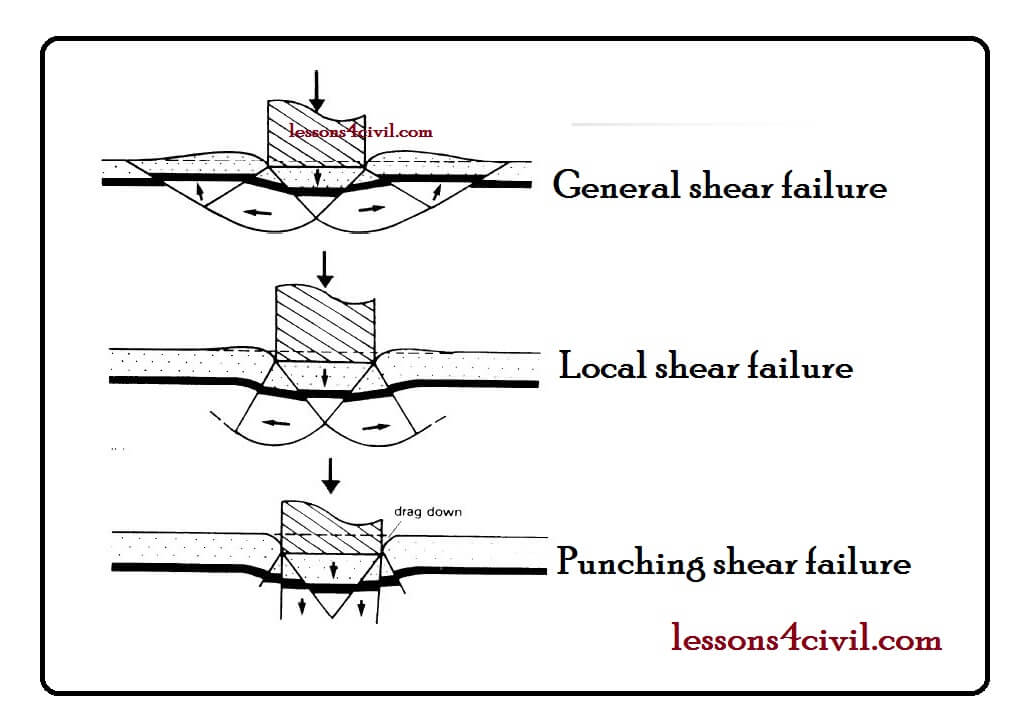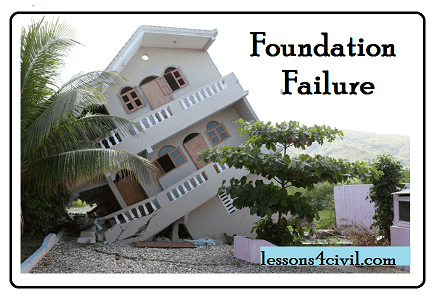Soil Failure Mechanisms
Soil failure mechanisms should be studied in order to design and construct safe structures. Once we recognized the possible failure modes, we can take preventive and remedial measures. In this article you will learn about the failure of foundation, its causes and consequences.
Signs of foundation issues
In simple word when the foundation fails to do its duty, you might notice several cracks in the walls. Doors and windows stick and don not open easily. Another alarming sign of foundation problems is separation of chimneys from the house siding. All of these signs means the bearing capacity of the soil is less then the loading.
Causes of foundation failure
Among several factors causing foundation failure, the most common ones are listed below
- Nature of soil beneath the foundation (expansive soils)
- Low density of the soil
- Soil erosion during the life span of structure
- Soil moisture reduction due to plants
- Soil creep or sudden landslides
Soil failure mechanisms
According to American society of Civil Engineers , “failure is an unacceptable difference between expected and observed performance”. Although failure might be thought as a catastrophic structure collapse in the public eye. Different failure modes of foundations are listed below:
- Drag down & heave
- Lateral movements
- Load transfer failures
- Vibrating effects
- Floating & water level changes
- Design & Construction errors
- Earthquakes
- Uplift forces
- Slope instability/landslide
To clarify what happens when foundation fails, let’s have a closer look at failure mechanism. Depending on the dimensions of the footing and the amount of load 3 failure mechanism are likely to develop inside the soil mass.
Based on the results of experimental studies, foundations constructed on dense sand with relative density greater than 70, the soil failure occurs suddenly when foundation settlement reaches to about 7 percent of the foundation width. This failure mechanism, which is called general shear failure.
For sands with lower density between 35 to 70 percent, this sudden failure never happens. Instead, sheared zones develops to the surface, which is called local shear failure.
Thing are a bit different for loose sand with relative density less than 35 percent. For such soils a sudden shears happens when settlement reaches 0.08 of the foundation width. In this case, the failure zone does not reach to surface. This type of failure is called “punching shear failure”. All soil failure mechanisms have been illustrated in the figure.

All in all, relative depth D/B and relative density of sand are the most affecting parameters on determination of soil failure mechanism. Soft clay are usually fail due to punching shear, while for dense clay or saturated normally consolidated clay general shear mechanism is more likely to occur.



Comments